Intro
Discover 5 ways prelabor rupture occurs, including spontaneous and induced causes, and learn about premature rupture of membranes, water breaking, and other related pregnancy complications.
The onset of labor is a highly anticipated event for expectant mothers, marking the beginning of a new chapter in their lives. However, for some, this journey may be interrupted by a condition known as prelabor rupture of membranes (PROM). This occurs when the sac that holds the baby breaks before labor starts, which can happen at any point during pregnancy. Understanding how prelabor rupture happens is crucial for managing the situation effectively and ensuring the best possible outcomes for both mother and baby.
Prelabor rupture of membranes is a significant event that requires immediate medical attention. It can lead to various complications, including infections and difficulties during delivery. The condition affects a considerable number of pregnancies, making it a topic of interest for expectant mothers and healthcare professionals alike. By delving into the ways prelabor rupture happens, individuals can better prepare themselves for the challenges associated with this condition.
The mechanisms behind prelabor rupture of membranes are complex and multifaceted. Several factors contribute to the weakening of the membranes, ultimately leading to their rupture. These factors can be broadly categorized into intrinsic and extrinsic causes. Intrinsic factors refer to the internal conditions within the mother's body, such as the presence of infections or anatomical abnormalities. Extrinsic factors, on the other hand, are external influences, including physical trauma or medical interventions. Understanding these factors is essential for developing effective strategies to prevent or manage prelabor rupture of membranes.
Introduction to Prelabor Rupture
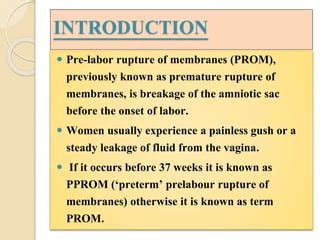
Causes of Prelabor Rupture
The causes of prelabor rupture of membranes can be diverse, ranging from infections to physical trauma. Infections, particularly those affecting the urinary tract or the genital area, can weaken the fetal membranes, making them more susceptible to rupture. Physical trauma, such as a fall or an accident, can also exert pressure on the uterus, leading to the rupture of the membranes. Additionally, medical procedures, including amniocentesis or cervical cerclage, carry a risk of membrane rupture due to the insertion of instruments into the uterus.Factors Contributing to Prelabor Rupture
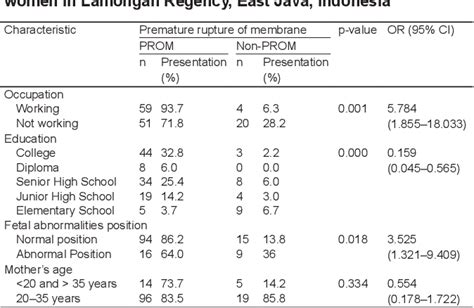
Diagnosis and Management
Diagnosing prelabor rupture of membranes involves a combination of clinical assessment and laboratory tests. A healthcare provider may perform a physical examination to look for signs of membrane rupture, such as the presence of fluid in the vagina. Laboratory tests, including a pH test of the vaginal fluid, can confirm the diagnosis by identifying the alkaline nature of amniotic fluid. Management of PROM depends on the gestational age and the presence of any complications. For term pregnancies, labor is often induced to reduce the risk of infection. In preterm cases, the goal is to delay delivery as long as safely possible to allow for fetal maturation, while closely monitoring for signs of infection or fetal distress.Complications of Prelabor Rupture
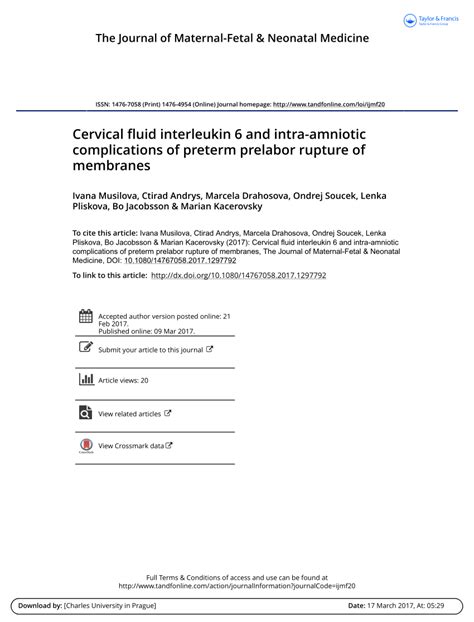
Prevention Strategies
While not all cases of prelabor rupture can be prevented, certain strategies can reduce the risk. Maintaining good genital hygiene, avoiding sexual intercourse during the later stages of pregnancy if there are signs of membrane weakness, and managing any underlying medical conditions can help prevent infections that may lead to PROM. Regular prenatal care is also crucial, as it allows healthcare providers to monitor the pregnancy closely and identify any potential issues early on.Coping with Prelabor Rupture
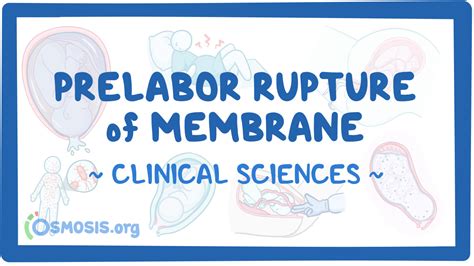
Future Perspectives
Research into the causes and management of prelabor rupture of membranes is ongoing. Future studies aim to identify more effective strategies for preventing PROM and improving outcomes for mothers and babies affected by this condition. Advances in medical technology and a better understanding of the underlying mechanisms of membrane rupture will be crucial in developing new treatments and interventions.Conclusion and Next Steps
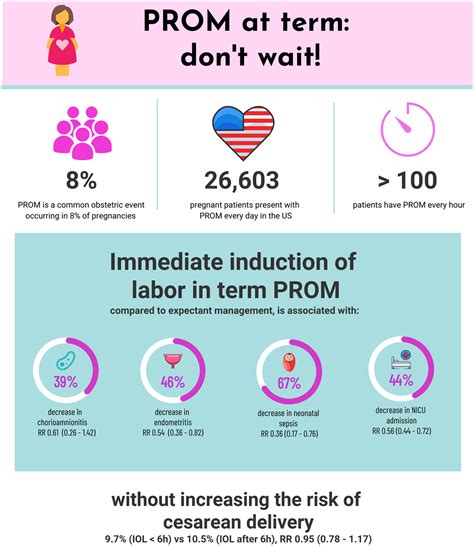
Final Thoughts
Prelabor rupture of membranes, while challenging, can be managed with the right approach. By staying informed, maintaining good health during pregnancy, and seeking prompt medical attention if symptoms of PROM occur, individuals can navigate this condition with confidence. The journey to motherhood is unique for each woman, and understanding the potential twists and turns, such as prelabor rupture, can make all the difference in ensuring a safe and healthy delivery.What are the signs of prelabor rupture of membranes?
+The signs of prelabor rupture of membranes include a sudden gush of fluid from the vagina, a slow leak of fluid, or a feeling of wetness in the vagina. Women may also experience contractions or a decrease in fetal movement.
How is prelabor rupture of membranes diagnosed?
+Diagnosis involves a physical examination to look for signs of fluid in the vagina and laboratory tests, such as a pH test, to confirm the presence of amniotic fluid.
What are the potential complications of prelabor rupture of membranes?
+Potential complications include infections, premature birth, and respiratory distress syndrome in the newborn. Infections can lead to severe illness in the mother and baby.
We invite you to share your thoughts and experiences with prelabor rupture of membranes in the comments section below. Your insights can provide valuable support and information for others navigating this condition. Additionally, consider sharing this article with friends and family to raise awareness about the importance of prenatal care and the management of prelabor rupture of membranes. Together, we can work towards ensuring healthier pregnancies and better outcomes for mothers and babies worldwide.
